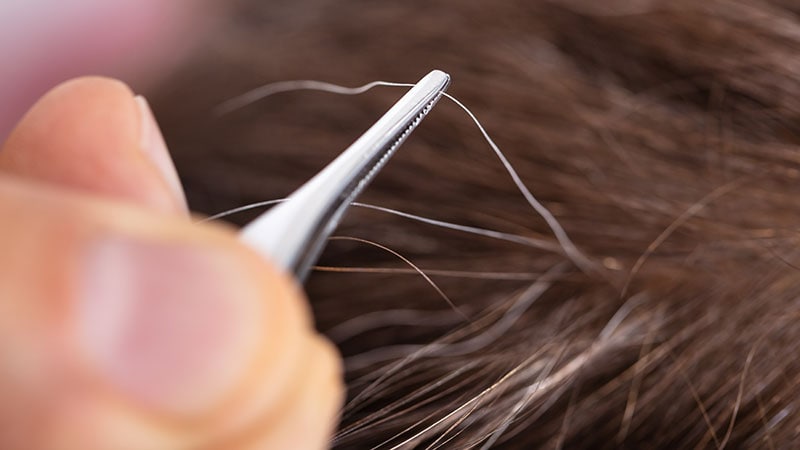Understanding the Role of Stem Cells in Gray Hair and Aging
Core Concepts
Stem cells play a crucial role in the graying of hair, with a cycle of differentiation and de-differentiation leading to the loss of hair color.
Abstract
The research delves into the process of how undifferentiated stem cells in hair follicles mature to melanocytes, responsible for hair coloring, and then revert to their primitive form, leading to gray hair. Key insights include the impact of stem cell movement, the role of UVB radiation in accelerating the process, and implications for melanoma. The study's advanced technology provided real-time tracking of stem cells, shedding light on their behavior and plasticity. While the findings are intriguing, challenges remain in reversing the graying process and understanding other factors influencing melanocyte stem cells.
Translate Source
To Another Language
Generate MindMap
from source content
Visit Source
www.medscape.com
Gray Hair and Aging: Could 'Stuck' Stem Cells Be to Blame?
Stats
"The regeneration cycle of melanocyte stem cells (McSCs) to melanocytes and back again can last for years."
"UVB radiation speeds up the process for McSCs to transform to color-producing melanocytes."
"Melanocytes that cause cancer can self-renew even from a fully differentiated, pigmented form."
Quotes
"It was thought that melanocyte stem cells are maintained in an undifferentiated state, instead of repeating differentiation and de-differentiation." - Mayumi Ito
"Our study suggests that moving melanocytes to a proper location within the hair follicle may help prevent gray hair." - Mayumi Ito
Deeper Inquiries
How might the findings of this study impact the development of new therapies for preventing gray hair?
The findings of this study suggest that gray hair may result from melanocyte stem cells getting "stuck" in the hair follicle, unable to properly regenerate and provide pigment to the hair shaft. Understanding this process opens up avenues for developing therapies that could potentially prevent or reverse gray hair. Researchers could explore ways to manipulate the microenvironment of the hair follicle to ensure that melanocyte stem cells can migrate and function correctly. By identifying the signals that these stem cells need to receive to maintain their proper function, scientists may be able to develop targeted treatments to address gray hair at its root cause.
What are the potential implications of the plasticity of melanocyte stem cells in relation to melanoma treatment?
The plasticity of melanocyte stem cells, as highlighted in this study, has significant implications for melanoma treatment. The ability of these cells to reverse their differentiation state suggests that melanoma cells, which are known to be highly plastic, may exploit similar mechanisms to evade treatment and continue to proliferate. Understanding the plasticity of melanocyte stem cells could provide insights into how melanoma cells maintain their self-renewal capacity and resist therapies aimed at targeting differentiated cancer cells. This knowledge could lead to the development of more effective treatments that specifically target the plasticity of melanoma cells, potentially improving outcomes for patients with this aggressive form of skin cancer.
How can the understanding of stem cell behavior in hair follicles be applied to other areas of medical research?
The understanding of stem cell behavior in hair follicles gained from this study can be applied to various areas of medical research beyond just hair biology. Stem cells play crucial roles in tissue regeneration and maintenance throughout the body, not just in the context of hair growth. By studying how stem cells interact with their microenvironment, differentiate, and self-renew in the hair follicle, researchers can gain insights into the behavior of stem cells in other tissues and organs. This knowledge can inform regenerative medicine approaches, cancer research, and the development of therapies for various diseases that involve stem cell dysfunction. Additionally, the advanced imaging and sequencing techniques used in this study can be applied to study stem cell behavior in different biological systems, providing valuable insights into stem cell biology and its implications for human health.

